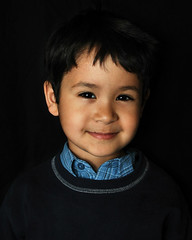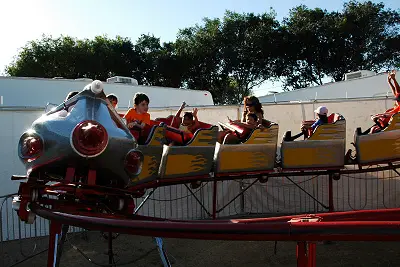 One of my favorite photo locations right now is our upstairs bathroom. The tub and toilet are separated from the rest of the bathroom by a door which can be opened or closed to let in varying amounts of sunlight from the window in the outer room. Combine that with a small flash and you get perfect portraits every time:
One of my favorite photo locations right now is our upstairs bathroom. The tub and toilet are separated from the rest of the bathroom by a door which can be opened or closed to let in varying amounts of sunlight from the window in the outer room. Combine that with a small flash and you get perfect portraits every time:
- Just drape a cloth over the shower bar (or buy a nice looking shower curtain)
- Turn off the lights
- Point your flash at the wall behind you and to the left
- Fire away!
If you’ve got a window, a little investigating may reveal that you get perfect light in your bathroom (or some other small room in your home) at certain times of the day just from that. Sure, it’s a little cramped but you can’t beat the price and you can’t argue with the results.
… Continue reading Quick tip: did you know you have a photo studio in your house?










